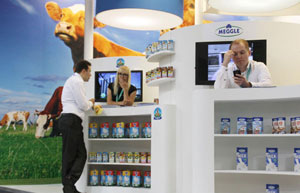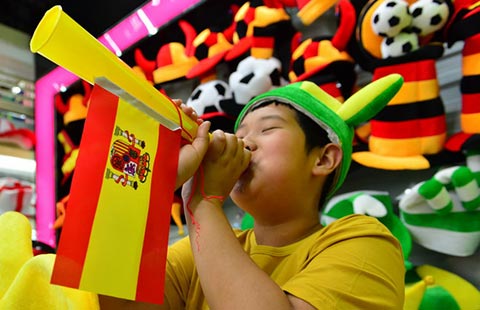China's dairies facing fierce competition
(Xinhua) Updated: 2014-05-07 10:47A sound and orderly competitive arena, after sweeping out substandard producers, will help leading firms grab larger market share.
Song Liang, a senior analyst of Distribution Productivity Promotion Center of China Commerce, said firms that have been rejected from the Chinese market did not take up a large proportion and main competitors still remain, indicating the competition will remain tough for the country's local brands.
In 2013, overseas milk powder brands occupied 54 percent of the market share in terms of sales revenue, outnumbering Chinese local products. Beingmate, China's largest milk powder maker, only had 8.5 percent of the market, dwarfed by 13.3 percent of Wyeth and 14.5 percent of Mead Johnson.
In addition, Song said the first batch of approvals only targeted the world's major producers and the state watchdog will certify brands from countries including Japan and the United States in the next phase.
To tackle the fiercer competition, Chinese dairy firms have started to counteract their weaknesses.
Sanyuan, one of China's leading dairy producers in Beijing, has received 10 million yuan ($1.62 million) worth of financial aid from the municipality for the company's research on infant formula milk powder, dubbed as the corporate's attempt to improve product quality and project a sound image for homegrown brands.
Similar to Sanyuan, Beingmate is also gathering steam to tap the Chinese market, by striving to build a more efficient marketing channel and restructure its business, as well as mergers and acquisitions, in a bid to increase its market proportion.
The moves are in line with the country's resolution to push forward integration in the dairy sector, thus strengthening large and promising producers.
Analysts expect resources and market share of small makers to be taken by dairy giants which will reinforce their position.
Foreign dairy products take up a lion's share of the Chinese market.Chinese consumers regard products to be safer and healthier, with them buying 301,000 tonnes of milk powder in the first two months of 2014, up 79.3 percent from a year ago.
|
|
- Bright Dairy in supply agreement with Pactum
- Danish dairy giant Arla makes big gains in Chinese market
- Mengniu Dairy sees 20% sales increase in 2013
- Imported dairy cream of crop for consumers
- New Zealand-China forum to help dairy industry development
- Dairy, meat exports drive record rise in New Zealand manufacturing sales
- E-commerce brings new business to China Commodities City
- Wholesale city riding wave of e-commerce
- Worries reasonable, housing price tumble unlikely
- Shangri-La Hotel enters British market
- Facebook gains by aiding nation's exporters
- Softening real estate market undercuts GDP growth picture
- Zhaopin.com job site gets ready for IPO
- GM China sales growth slips


















